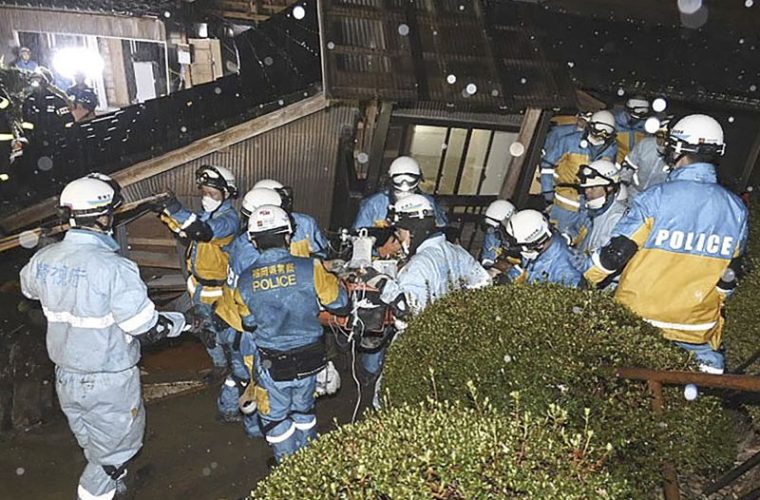
The Student Murders in Idaho Highlight the Unimpressive Police Record on Violent Crime
It’s been three weeks since four students at the University of Idaho were stabbed to death at a home in Moscow, Idaho, and law enforcement officers say they have no suspect. In the early hours of November 13, three woman and one man were murdered in an off-campus home where two other roommates were also sleeping. Yet, somehow the killer or killers managed to escape the premises without being seen or even waking the other roommates.
The small local police department in the city of approximately 25,000 people now reports it is being assisted by 48 FBI investigators plus 13 investigators from the state police. Yet, in spite of all this extra spending and staffing, the police department has reported no breakthroughs in the investigation.
The investigation has also been marred by alarmingly incoherent attempts to address public safety in the community following the homicides. Immediately after the homicide took place, for instance, police spokesmen confidently claimed the public was not at risk, even though the killer or killers were at large. Perhaps in an effort to make themselves seem competent, police claimed they were sure the victims were specifically “targeted” and the murderer was—for some reason—absolutely no threat to others. Only a day later, however, the police admitted they don’t know if the victims were specifically targeted or if the crime was somehow a random act. Weeks later, the police still don’t know, and more skeptical students have been taking steps to arm themselves and secure their homes from intruders. Fear runs so high that the University of Idaho campus is reportedly “half empty.”
The parent of one victim has noted “we’re angry” about law enforcement’s lack of progress. The parent of another victim has turned to a private investigator.
Unsolved Crimes Are Very Common
Even of these homicides remain unsolved for decades, however, that would not make the case especially notable. In the United States, fewer than half of violent crimes in the US are “cleared,” and this doesn’t mean a perpetrator is necessarily convicted in a court of law. It just means the police have concluded the investigation and consider it to be closed. In 2017, for example, only 45 percent of violent crime led to arrest. Property crime clearances are much worse. In recent years, only around 17 percent of burglaries, arsons, and car thefts are “cleared.”
Unfortunately, law enforcement’s rather unimpressive record for addressing violent crime nationwide may prove to be especially hard to digest in Moscow, Idaho where, prior to 2022, there had not been a murder since 2015. (With four homicides in this small community, Moscow’s homicide rate in 2022 is now 15 per 100,000 and similar to that of Tulsa, Oklahoma and Denver, Colorado.)
Small Town Policing: Serious Crime Is Often Not a Priority
Like the police in so many similar communities, the Moscow Police have long focused on petty drug offenses and non-criminal offenses while more serious violent crime and property crime receives far less attention. If this investigation does not lead to any arrests, that would not exactly be shocking given what we know about arrests for other violent crimes in the city. Not that Moscow is especially notable for crime. Moscow is a town of approximately 25,400 people. and has few homicides or rapes. Like many towns of its type, however, there are fair number of thefts, burglaries, stolen cars, and assaults.
In most cases, these offenses are cleared at rates well below 50%. Indeed, over the five year period from 2017 to 2021, only the clearance rate for simple assault topped fifty percent at 56%. The clearance rate for aggravated assault on the other hand, was 38%, while the clearance rates for larceny, car theft, and burglary were 13%, 3%, and 10%, respectively. For example, out of 62 reports of stolen cars in Moscow over this period, only 2 were cleared. Among 1,823 larceny offenses reported during this period, only 235 were cleared.
Apparently, recovering stolen property and prosecuting thugs are not exactly the specialty of police in Moscow. But what is their specialty?
A Nationwide Problem
We have known for years that most police work centers on lesser crimes. According to the Vera Institute of Justice, “fewer than five percent” of arrests
are for serious violent crimes. Instead, the bulk of police work is in response to incidents that are not criminal in nature and the majority of arrests involve non-serious offenses like “drug abuse violations”—arrests for which increased more than 170 percent between 1980 and 2016—disorderly conduct, and a nondescript low-level offense category known as “all other non-traffic offenses.”
These offenses are behind 80 percent of all arrests.
We see a similar breakdown in Moscow. In contrast to the very low clearance rates for thefts and assaults, clearance rates for drug offenses are remarkably high. From 2017 through 2021, the clearance rate for drug violations was a lofty 73 percent, while the clearance rate for “drug equipment violations” was even higher at 77 percent.
To fight its war on drugs—while putting theft and assaults on the back burner—the police department is well funded. In 2020, the police department’s budget in Moscow was $8.5 million out of a total city budget of $101 million. Of that $8.5 million, the city spends about $4.5 million on personnel. With a police staff of 45 employees, that’s about $100,900 per employee. This doesn’t all go into salaries and benefits, of course, but it should be noted that $100,000 is well in excess of the local median household income of $42,262.
The Moscow police department’s lack of emphasis on non-drug crime has its parallels in the national data as well. For example, criminologist Victor Kappeler concludes that per capita, police make 14 arrests per year. But, “less than one of these arrests would have been for a violent crime and fewer than two arrests would have been for property crimes. In fact, 12 of the arrests made by our ‘average’ police officer would have been for petty crimes like minor drug or alcohol possession, disorderly conduct, and vandalism.”
Even in communities with numerous homicides, few resources are devoted to solving the most serious crimes. In Baltimore, for example, the police department devotes less than three percent of its police officers to homicide investigations. This leaves most personnel to focus on small-time violations that are low-risk for officers and relatively easy to investigate.
One side effect of all this is that most police personnel simply aren’t very skilled at investigating serious crime. This raises the question of whether the taxpayers who pay the bills would endorse this lack of attention toward more serious crimes were police departments actually answerable to market forces and fee-paying consumers. After all, to criticize police performance is not to assume that there is no need at all for night watchmen and security personnel. This is an important job. The question remains, however, whether it is prudent to keep giving police departments the benefit of the doubt when so many devote so few resources to solving the most serious crimes.




